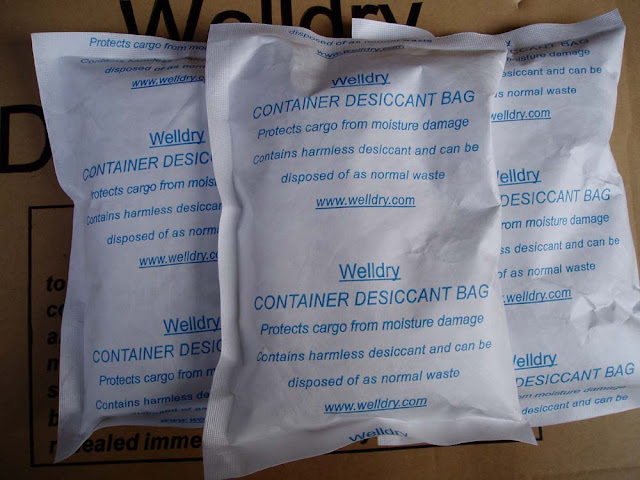Anyone who works in the manufacturing and shipping of corrosion-sensitive merchandise can understand the importance of ensuring that this merchandise is packaged and stored correctly. As these items are often sensitive to external changes, such as humidity, they must be properly protected to reach their final destination in their original condition. The most popular solution for humidity control remains the use of container desiccant for a variety of items.
What are container
desiccants?
So, what exactly are container desiccant? Whether you know their name or not, you've probably come
across them on items you've bought. They are used for packaging anything like
slippers or sensitive electronics. As the name implies, desiccants absorb
excess moisture in the air, ensuring that goods do not deteriorate due to
moisture damage or corrosion while still in their original packaging. Although
silica is one of the best-known desiccants, other options are also available,
with different shapes or sizes to meet any need.
How do container
desiccant work?
Container desiccant
are placed inside the aluminum packaging to remove any moisture, protecting the
merchandise once it is packaged. In addition, these packages contain a drying
agent, which ensures that any excess moisture is absorbed by the desiccant and
not by the product inside the package.
Maintain the
quality of the merchandise
Container desiccant
can form an important part of the packaging process, ensuring that the items
you manufacture reach the customer in their original condition without damage
or deterioration in quality. In addition, as container desiccant vary in size
and shape, they offer a versatile solution for most humidity levels, making
them a popular solution among manufacturers in many industries.
If you are considering
investing in container desiccant, our range, made from activated clay, has many
applications and can be used with both military and commercial products to
protect against moisture damage. Remember, if you have questions or would like
more information, our team is here to help.
We recommend you to
visit protective
packaging company like Britwrap
for more information.
Why use moisture
barrier packaging?
Moisture barrier
sheets are a niche product; you may never have heard of them. However, one
thing is certain, the applications for its use are limitless.
Moisture content
influences the physical properties of a substance, such as weight, density,
viscosity, refractive index, and electrical conductivity, among other things.
So, when your customer is going to process that highly specialized polymer or
specialty chemical, you've carefully manufactured moisture content is key.
Barrier sheets have a
transmission rate 80 times lower than a standard polyethylene liner. To you and
me, that means it's 80 times more effective at keeping moisture out. It also
works the other way. If you want to retain a particular moisture content of
your product, a Barrier foil liner will prevent your product from drying out.
Dry product protection
is not the only arena where barrier sheets are king. Corrosion prevention is
another key application to which he lends his hand. A barrier foil coating
sealed with a carefully calculated amount of desiccant will ensure that the
relative humidity is kept well below 40%, where corrosion of metals will occur.
3D Barrier Bags can even attach an indicator to your barrier foil bag so you
can monitor this.

Comments
Post a Comment